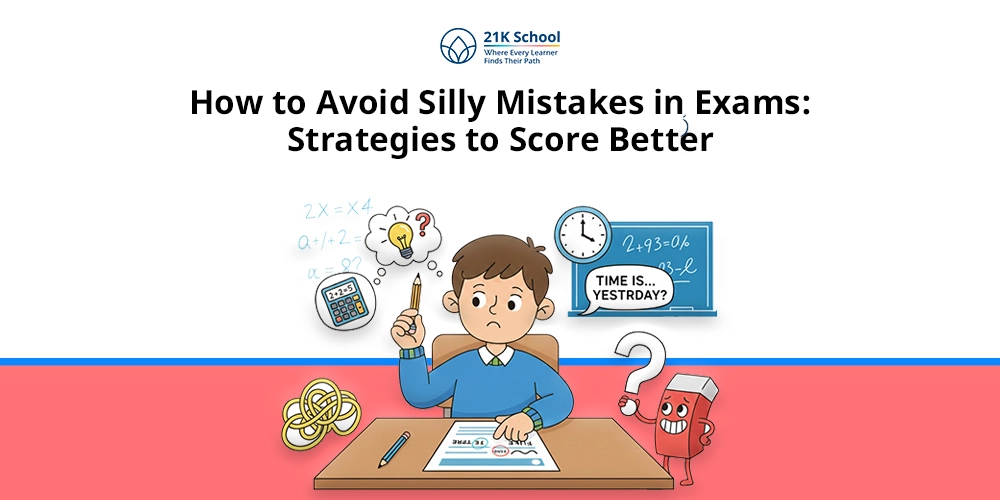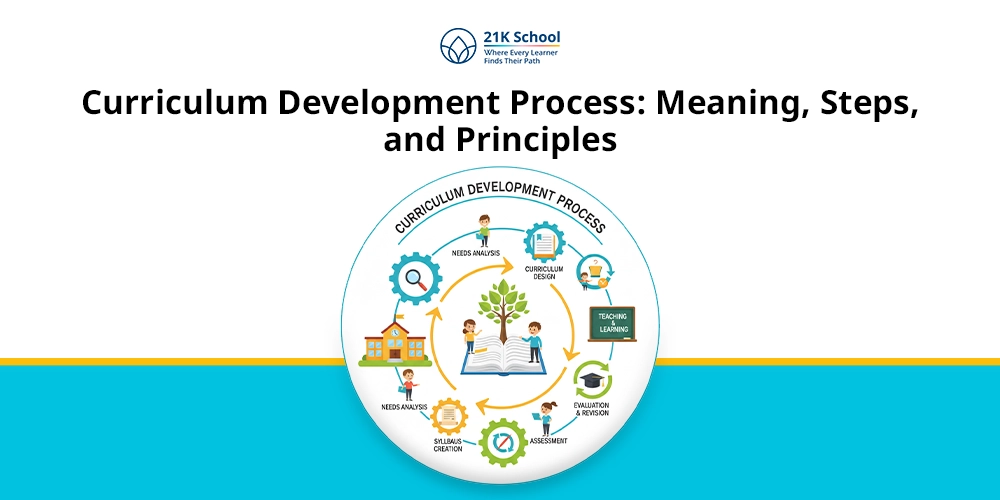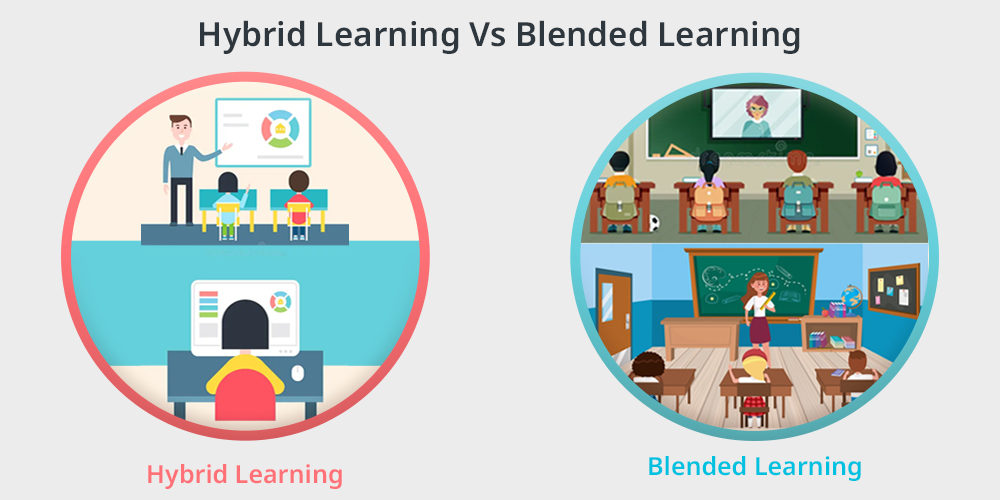
Hybrid learning and blended learning both are an evolution of e-learning initiatives.
With the increase of online education a new method of teaching and learning process has been implemented in the model of hybrid learning and blended learning.
Both the hybrid learning and blended learning has broadened the access of quality education and promotes dynamic education which helps in promoting passive learning.
Most individuals think that hybrid and blended learning are considered the same things, but in reality both are different.
In hybrid learning students can attend physical classes as well as attend classes in online mode, which gives them flexibility, whereas in blended learning students attend classes in offline mode and receive educational resources in online mode, this enables students to become remotely engaged and feel comfortable.
Blended learning and hybrid learning have changed the education system by making a new initiative of education which enables every child to actively participate in class sessions without any hindrances.
Table of Contents
What is Hybrid Learning?
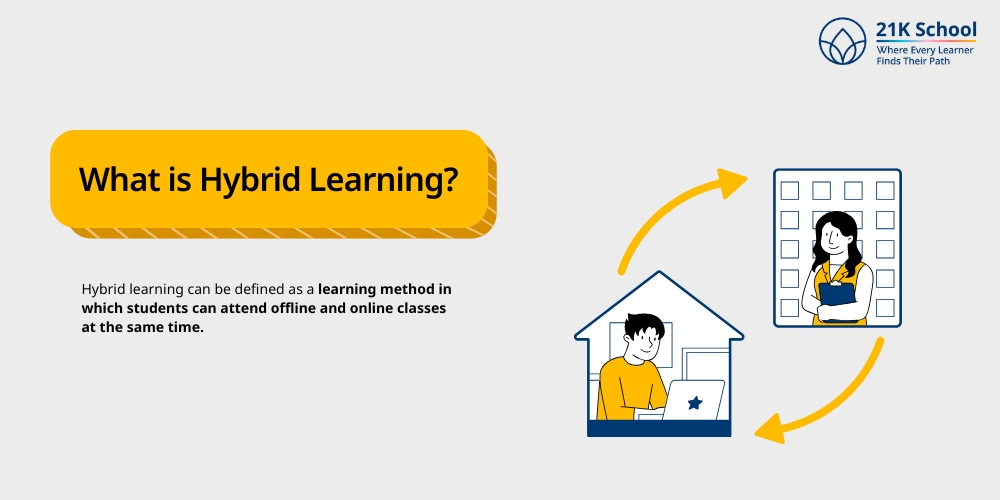
Hybrid learning can be defined as a learning method in which students can attend offline and online classes at the same time.
It is a dynamic education model that enables children to attend the classes from school in a physical mode, whereas some students can attend classes in a virtual mode.
In hybrid learning, teachers give instructions to every student, both in-class and remote students. Hybrid learning has become possible with the help of virtual learning platforms and technologies.
Hybrid learning programs offer flexibility and equal learning opportunities to every student, irrespective of their social backgrounds.
Advantages of Hybrid Learning
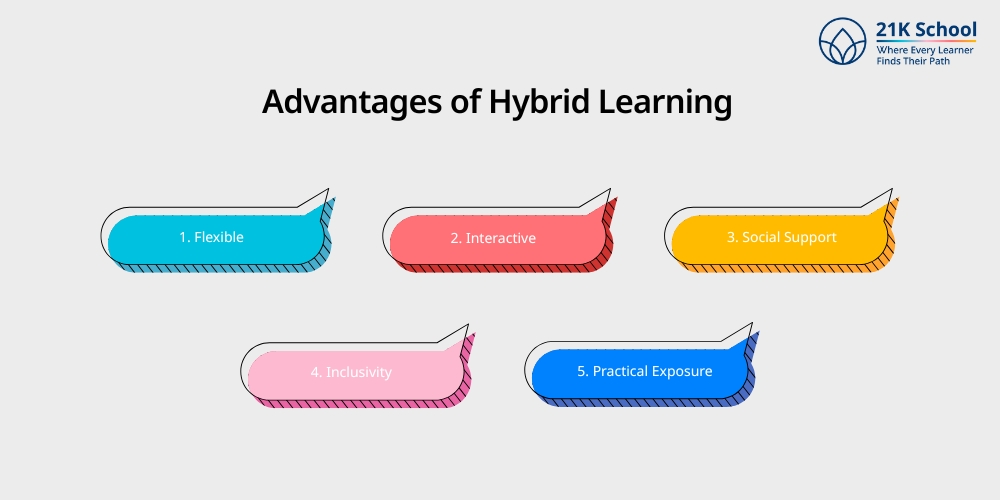
Hybrid Learning allows both the initiative of e-learning and physical interaction, where students can attend both offline and online education at the same time.
Hybrid learning is known for providing flexible and accessible learning opportunities for cognitive development of children. Here are the advantages of hybrid learning mentioned below.
1. Flexible:
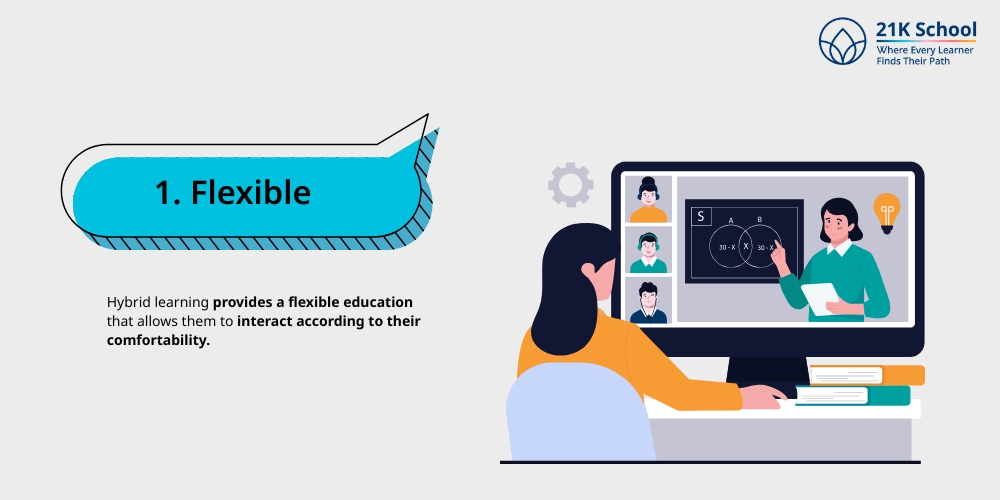
Hybrid learning provides a flexible education that allows them to interact according to their comfortability.
Hybrid learning gives students autonomy to choose whether they want to continue their studies from online settings or physical modes, which allows students to work on other things along with their education.
2. Interactive:
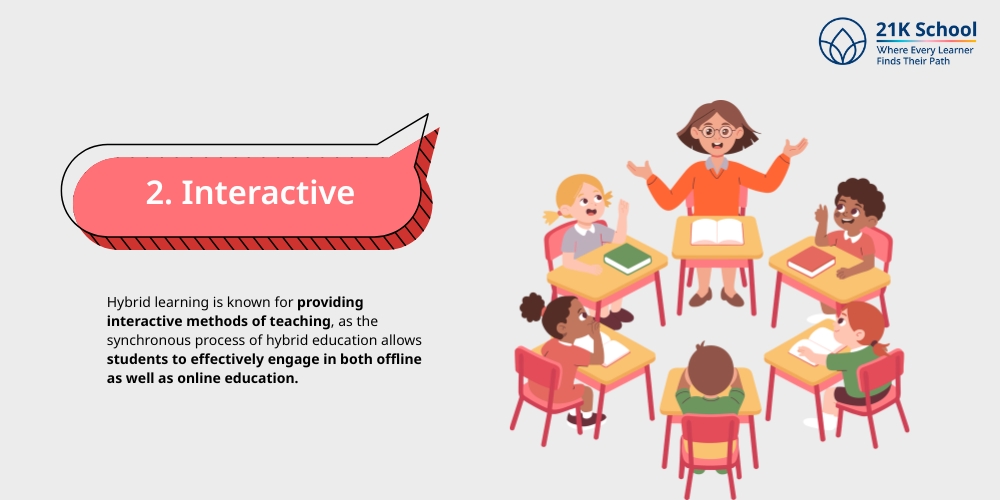
Hybrid learning is known for providing interactive methods of teaching, as the synchronous process of hybrid education allows students to effectively engage in both offline as well as online education.
This enables students to connect with their teachers and peers more efficiently, irrespective of their locations and backgrounds.
3. Social Support:
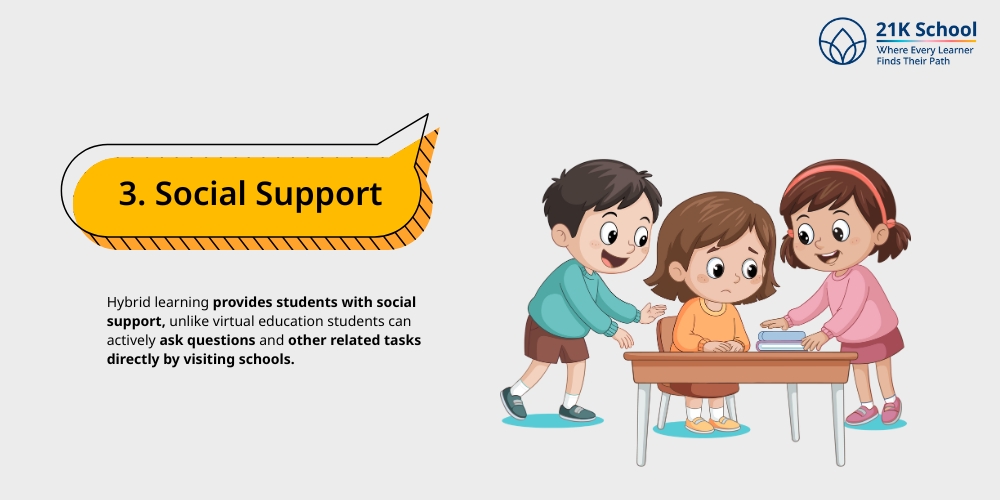
Hybrid learning provides students with social support, unlike virtual education students can actively ask questions and other related tasks directly by visiting schools.
Even in an online setting, teachers and faculty members also provide support to students from virtual platforms.
4. Inclusivity:
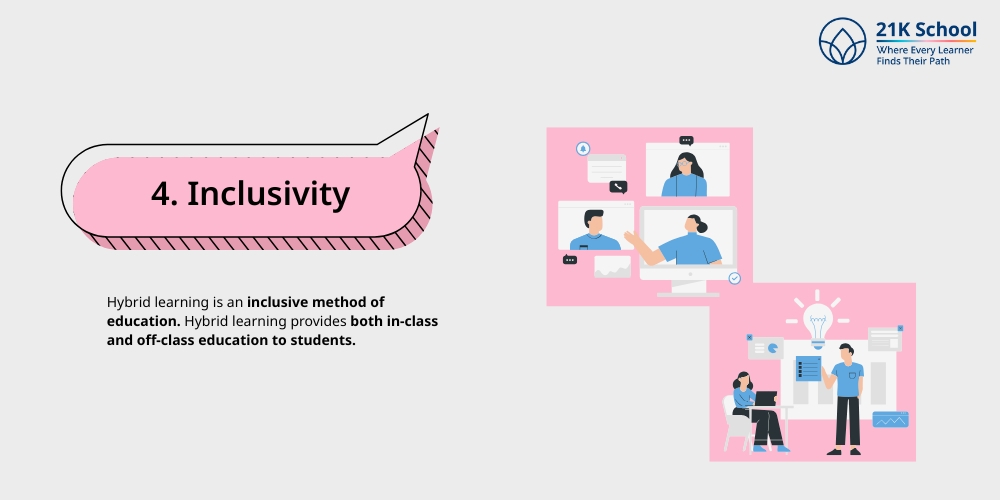
Hybrid learning is an inclusive method of education. Hybrid learning provides both in-class and off-class education to students.
With this model, every student gets equal and quality education irrespective of any barriers.
This model of education provides diverse learning preferences that allows them to effectively promote inclusivity.
5. Practical Exposure:
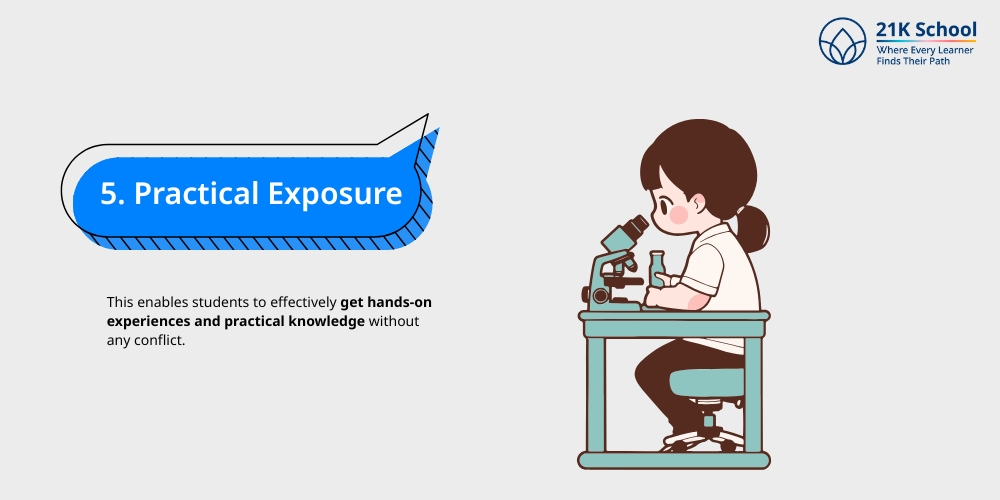
Hybrid learning allows students to indulge in practical experience. The merits of hybrid learning allow students to gain practical insights in both offline and online modes.
This enables students to effectively get hands-on experiences and practical knowledge without any conflict.
Disadvantages of Hybrid Learning
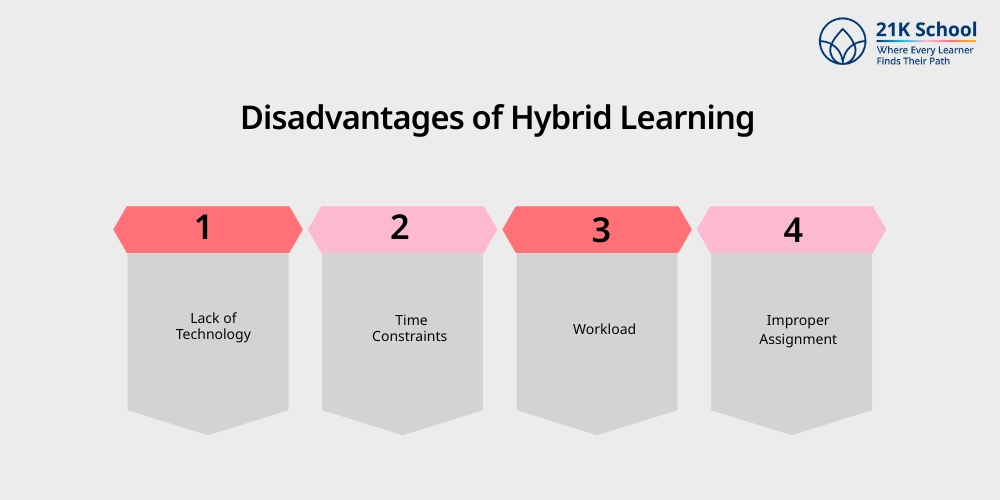
There is no doubt that hybrid learning has lots of benefits, but still it has some disadvantages that hinders the learning process. Disadvantages such as lack of technology, lack of time, workload and so on.
Here are the disadvantages of hybrid learning mentioned below.
1. Lack of Technology:
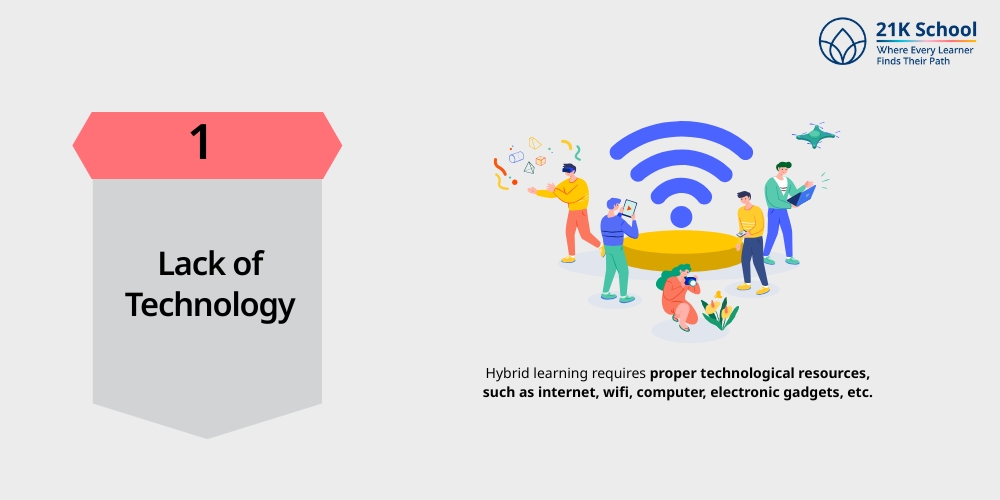
Hybrid learning requires proper technological resources, such as internet, wifi, computer, electronic gadgets, etc.
Lack of these technologies creates a barrier to hybrid learning. Not every student has easy access to technology, especially in remote areas.
2. Time Constraints:
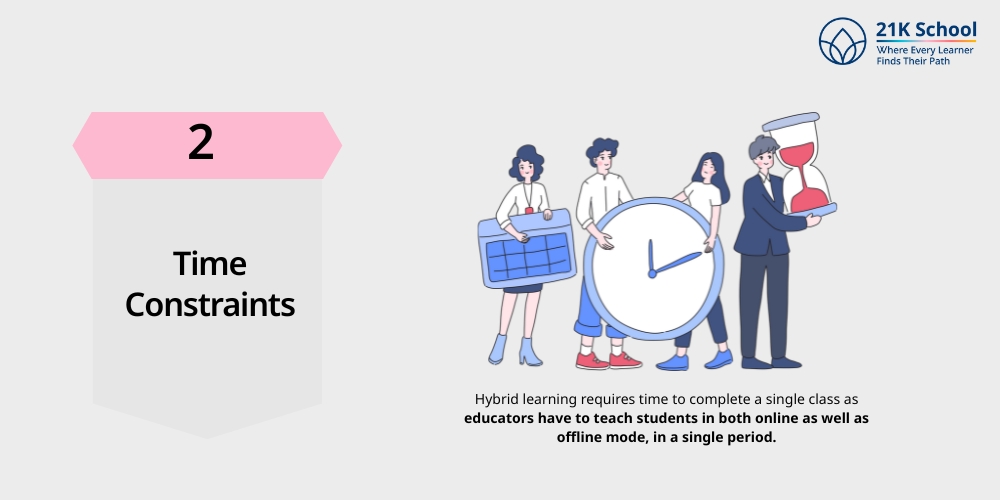
Hybrid learning requires time to complete a single class as educators have to teach students in both online as well as offline mode, in a single period.
Due to limited time it becomes very tough to manage the classes for every student.
This makes it very challenging for students as well to understand the concepts in a limited time.
3. Workload:
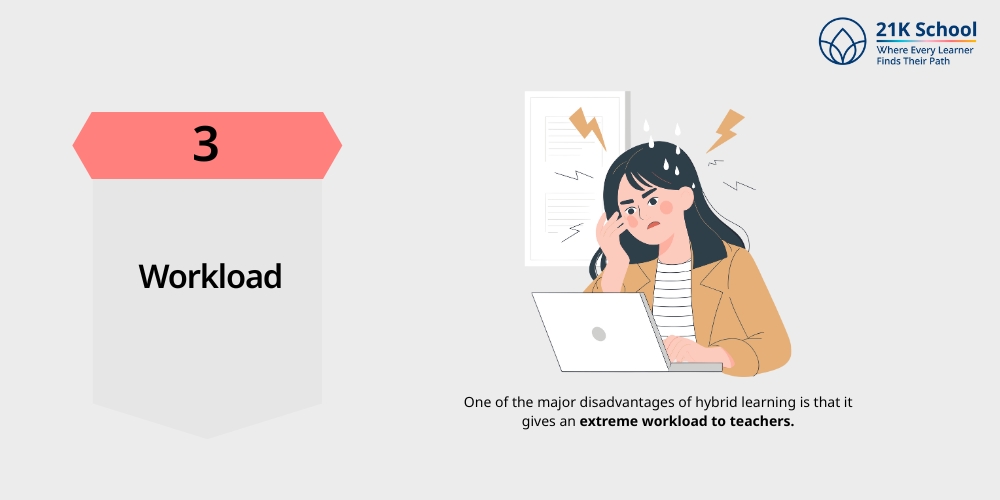
One of the major disadvantages of hybrid learning is that it gives an extreme workload to teachers.
As in hybrid classes, teachers have to teach students in both virtual mode and offline mode simultaneously, as well as they have to create presentations for online classes too, and due to this, they have to face lots of work pressure.
4. Improper Assignments:
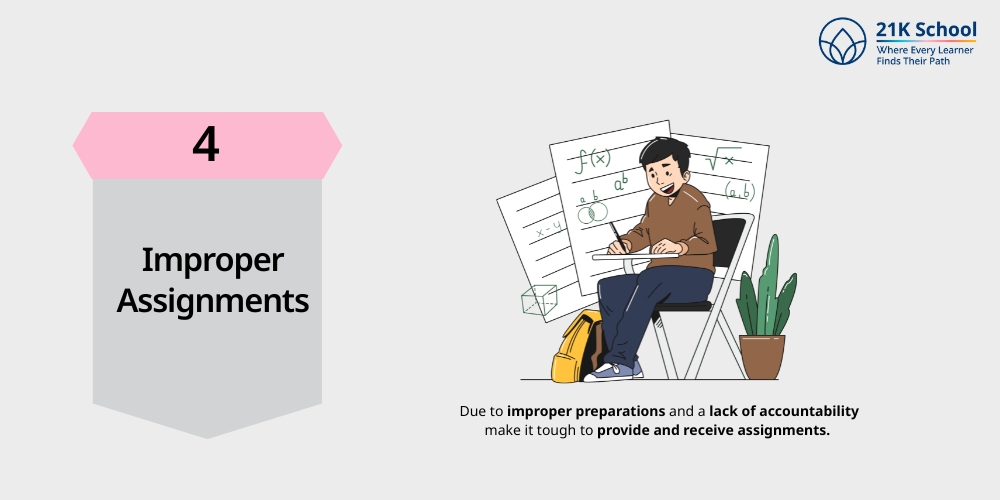
Sometimes, hybrid learning makes it difficult for teachers to give assignments in both online and offline modes. Due to improper preparations and a lack of accountability make it tough to provide and receive assignments.
This makes it tough for students, as well, who attend online classes to get proper feedback for their assignments.
What is Blended Learning?
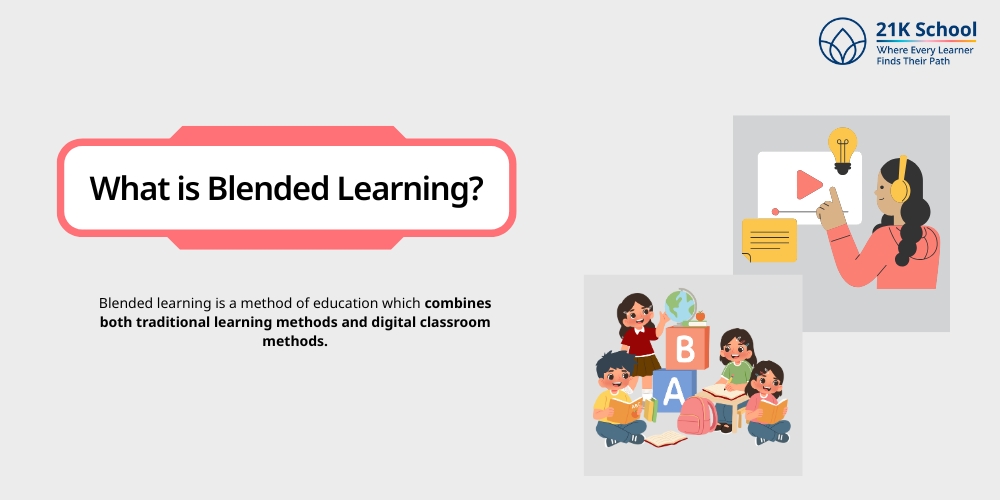
Blended learning is a method of education which combines both traditional learning methods and digital classroom methods.
In simpler terms, it can be defined as a learning type in which students attend classes in offline mode and receive educational resources or elements in online mode.
Blended learning offers students flexible and comprehensive learning opportunities which allow them to collaborate and engage in lifelong learning.
Blended education enables students to adjust to various learning styles and improve memory retention.
Advantages of Blended Learning
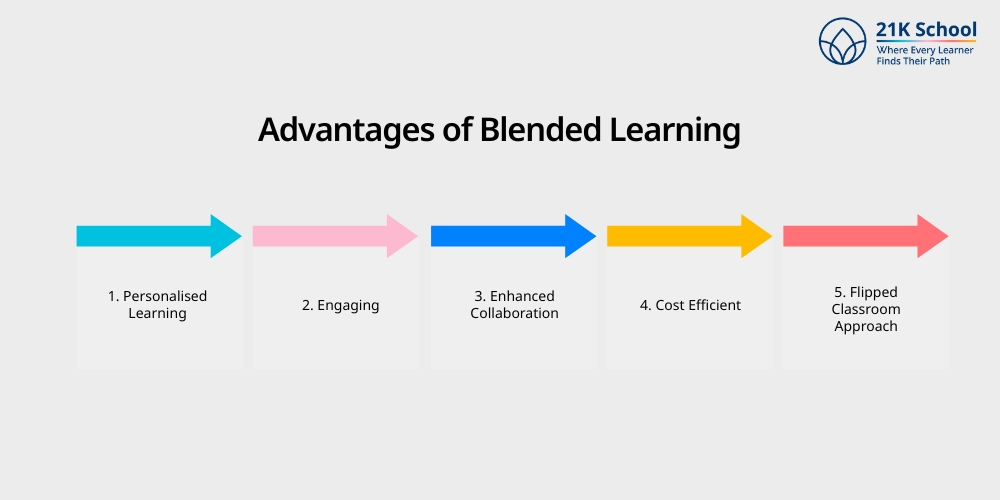
Blended learning enhances the learning outcomes of students through practical experiences and knowledge retention.
Blended learning provides flexible and personalised instruction, making education easily accessible and gives personalised education. Here are the advantages of blended learning mentioned below.
1. Personalised Learning:
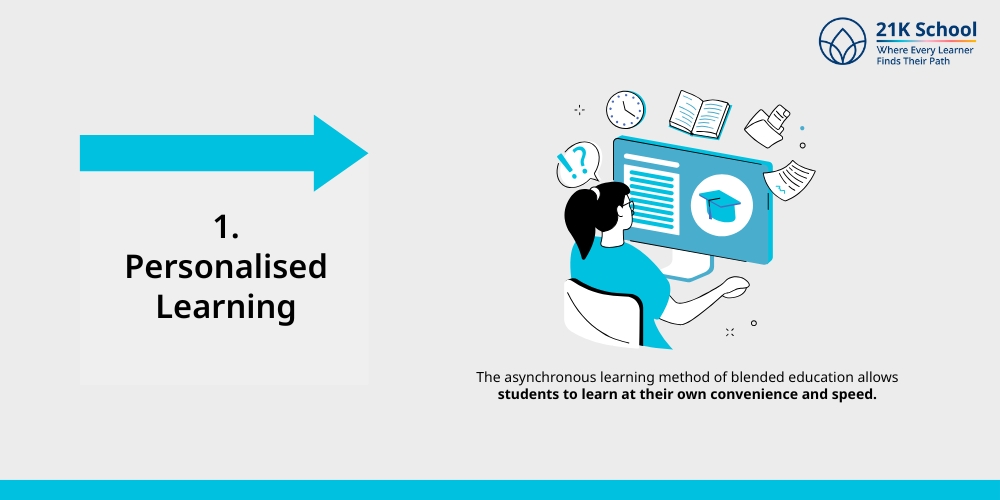
The blended learning model enables students to get personalised learning. The asynchronous learning method of blended education allows students to learn at their own convenience and speed.
2. Engaging:
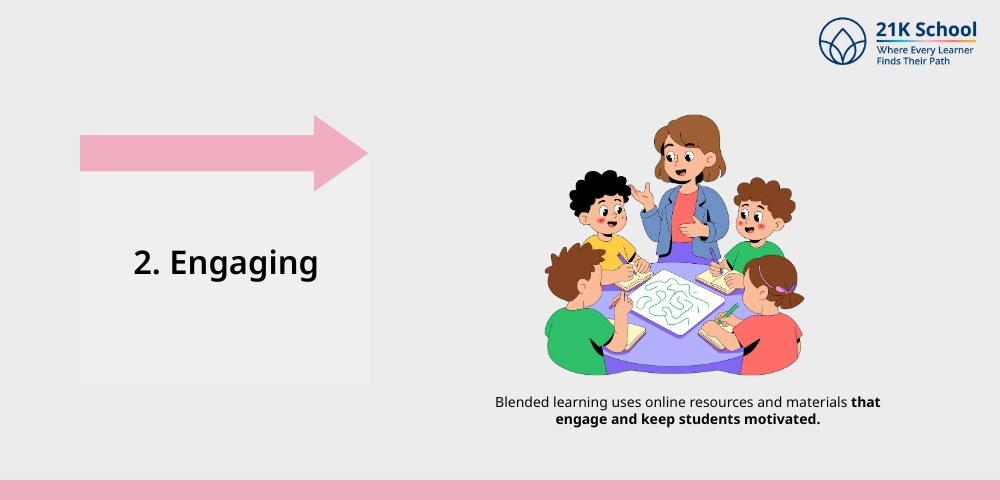
Blended learning uses online resources and materials that engage and keep students motivated.
This method engages students with an assortment of games, videos and quizzes and accommodates their various learning preferences.
3. Enhanced Collaboration:
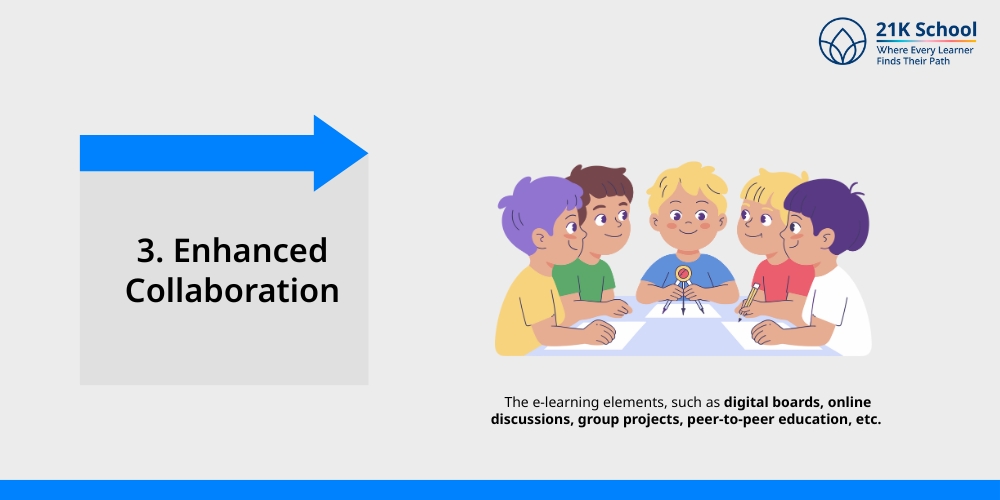
Blended education promotes collaboration and creates a collaborative learning environment. The e-learning elements, such as digital boards, online discussions, group projects, peer-to-peer education, etc.
Enables students to share their thoughts, videos, and communicate openly with others.
4. Cost Efficient:
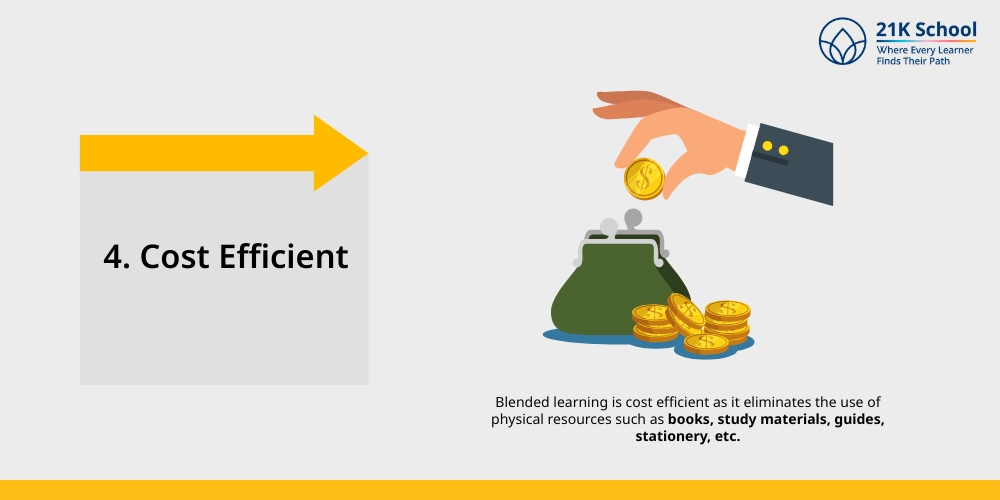
Blended learning is cost efficient as it eliminates the use of physical resources such as books, study materials, guides, stationery, etc.
As mostly the digital versions of elements were provided to students, this enables students to effectively utilise their time and money.
5. Flipped Classroom Approach:
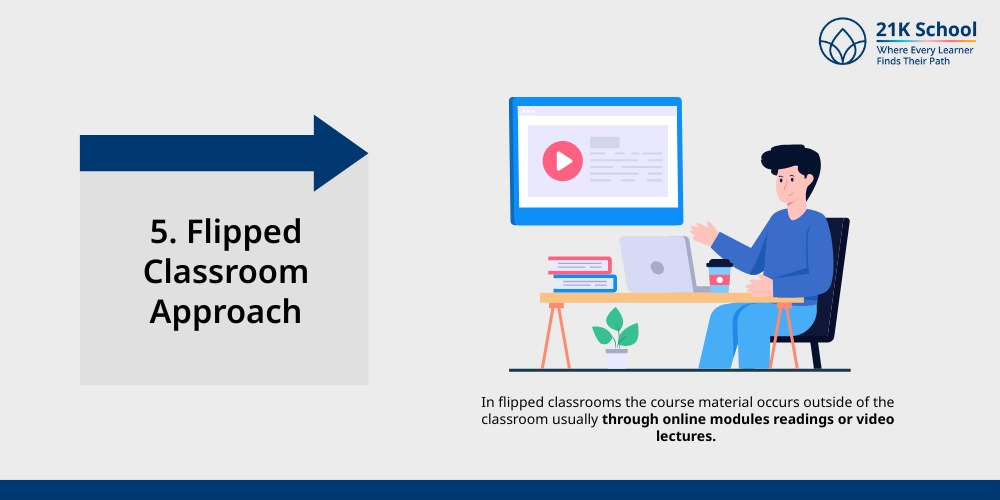
Blended learning enables flipped classroom methods. In flipped classrooms the course material occurs outside of the classroom usually through online modules readings or video lectures.
After that, class time is devoted to discussions, group projects, exercises and active learning activities.
Disadvantages of Blended Learning
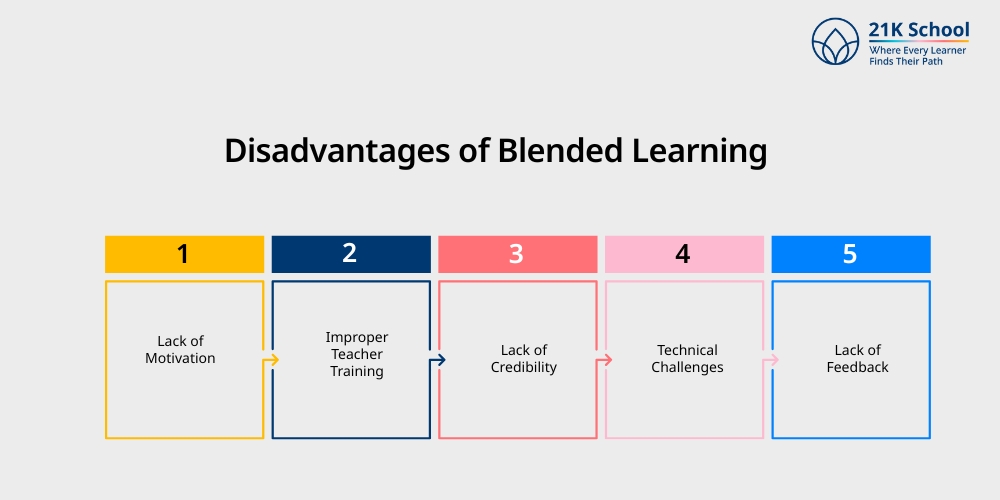
Blended learning has lots of benefits that enables students to effectively acquire the experience of quality education.
However, there are various disadvantages of blended learning that makes it tough to be utilized in classroom education.
Below, you can check the drawbacks of blended learning.
1. Lack of Motivation:

Lack of motivation is one of the major drawbacks of blended learning.
As many students find it difficult to stay motivated in a blended learning approach, as it lacks the physical structure of education, students sometimes lose interest.
2. Improper Teacher Training:
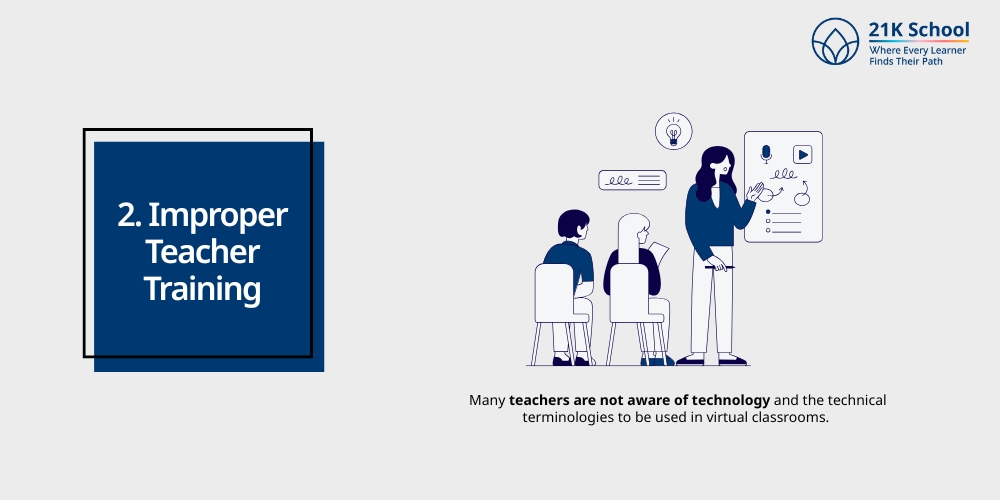
Proper teacher training is essential to provide students with technical knowledge. Many teachers are not aware of technology and the technical terminologies to be used in virtual classrooms.
Therefore, it is essential to provide teachers with adequate training to help make it more interactive.
3. Lack of Credibility:

Lack of credibility is one of the major reasons that hinders the process of blended learning.
As students can use digital tools and copy materials to make their assignments, it becomes a serious issue for credibility.
4. Technical Challenges:
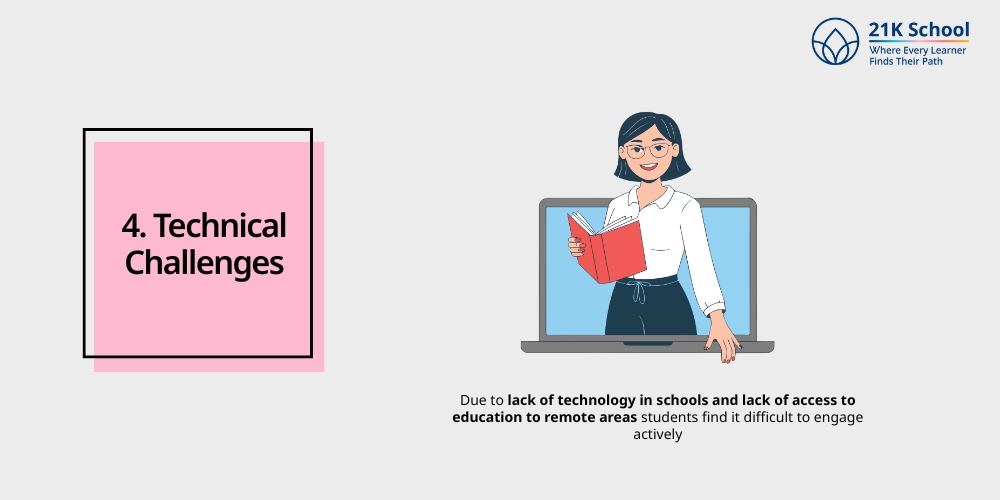
Blended learning requires good quality internet, wifi, mobile, laptop, computer, etc.
Due to lack of technology in schools and lack of access to education to remote areas students find it difficult to engage actively.
5. Lack of Feedback:
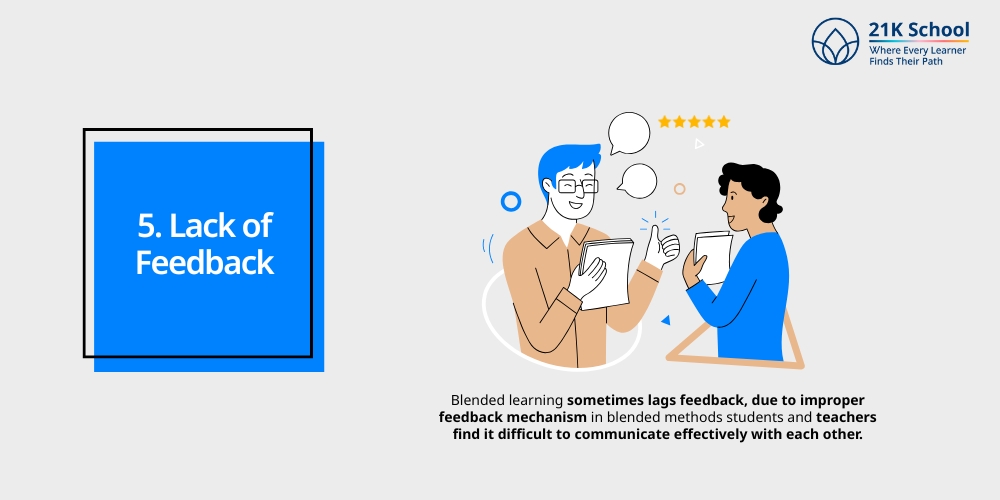
Blended learning sometimes lags feedback, due to improper feedback mechanism in blended methods students and teachers find it difficult to communicate effectively with each other.
Comparison Between Hybrid Learning and Blended Learning
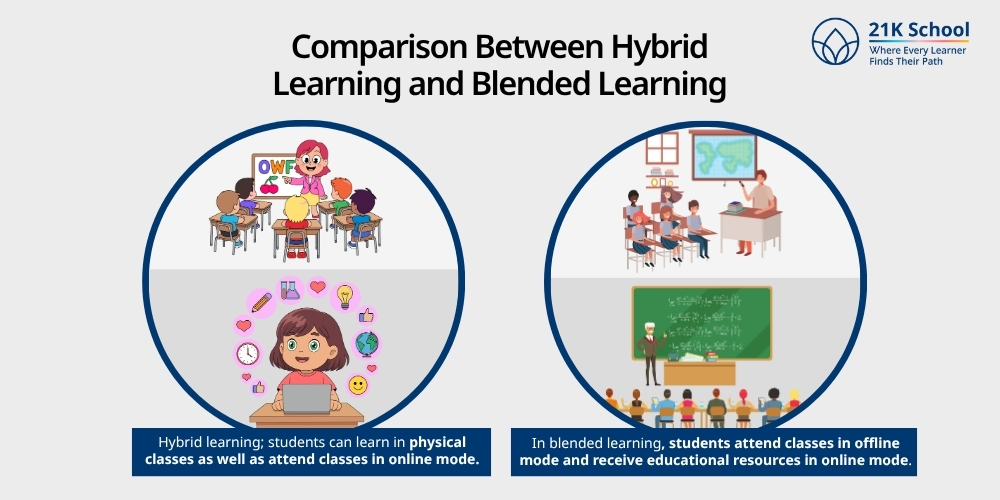
Both hybrid learning and blended learning are related to online education or utilising online terminologies in physical classrooms.
However, both models are different hybrid learning; students can learn in physical classes as well as attend classes in online mode, whereas in blended learning, students attend classes in offline mode and receive educational resources in online mode.
Below, you can check the comparison between hybrid Learning and blended learning.
| Aspects | Hybrid Learning | Blended Learning |
| Definition | A hybrid learning approach allows students to simultaneously attend both online and offline classes. | Blended learning is a teaching strategy that blends traditional classroom instruction with online learning. |
| Integration of Technology | Hybrid learning requires virtual meeting platforms such as Google Meet, Zoom, Google Classroom, Microsoft Teams, etc. | Blended learning only requires Learning Management Systems, e-learning boards, and formative assessment tools such as Google Forms, Kahoot, Quizzes, etc. |
| Flexibility | Hybrid learning offers flexibility, in which students can complete their studies according to their comfort and time. | Blended learning is less flexible, as proper guidance is required for studies and other projects. |
| Method | Hybrid learning uses a synchronous learning method | Blended learning uses an asynchronous learning method. |
| Examples | Microlearning, Online discussions, conferences, online meetings, etc. | Gamification, virtual classroom, flipped classroom, rotation model, etc. |
Conclusion
Innovative approaches to education that use technology to improve the learning process are represented by hybrid and blended learning.
While hybrid learning offers flexibility and inclusivity by enabling students to take both online and in-person classes at the same time, blended learning combines online resources with traditional classroom instruction to foster engagement and personalised learning.
The requirement for technology and possible difficulties with teacher preparation and motivation are just two of the distinct benefits and drawbacks of each model.
The decision between hybrid and blended learning ultimately comes down to the particular requirements of both educational institutions and students, as both approaches seek to deliver high-quality instruction and encourage active engagement in the learning process.

